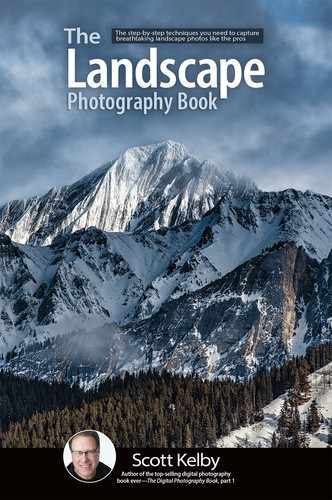Avoid Light Pollution

©Adobe Stock/serghi8
Before you even pull out your camera and tripod, you’re going to need to find a shooting location that will put you in position to capture a star-filled sky and/or the Milky Way (the “home run” of night sky shots). This is significantly harder than it sounds because to get the type of shots you probably want, you’re going to have to be far away from cities, highways, and basically any signs of civilization. These “signs of life” (houses, farms, billboards, highways, etc.) generate an amazing amount of “light pollution,” which masks the stars, makes them appear very faint (if they’re visible at all), and pretty much ruins your chances of making a great shot. Even if the city or houses are way off in the distance, you’re still hosed—you literally have to get miles away from civilization to get that deep black, unpolluted sky that makes great images. There is actually an official scale that rates the quality of the night sky and your chances of getting a great shot. It’s called the Bortle scale and it numerically ranks the brightness of the night sky at your current location, using a scale from 1 to 9. A rating of 9 means the sky is so bright that you can’t really see any stars at all, and if you can see any, they’re so weak you can pretty much forget about it (say that in a New Jersey accent to really make it hit home), and a rating of 1 means “this is the night sky you’ve always dreamed of.” What are you looking for? A 3 or lower (the lower the number, the better the sky). So, start with finding a location far enough away from other humans that you have a shot at making a great image. I can’t overstate the importance of a good sky.
